
| Part of the Politics series on |
| The Situationist International |
|---|
 |
Jacqueline de Jong (Hengelo, 1939) is a Dutch painter, sculptor and graphic artist.

| Part of the Politics series on |
| The Situationist International |
|---|
 |
Jacqueline de Jong (Hengelo, 1939) is a Dutch painter, sculptor and graphic artist.
She was born in the Dutch town of Hengelo to Jewish parents. Faced with the German invasion of the Netherlands, they went into hiding. After an abortive escape attempt to England, her father Hans remained in Amsterdam while her mother and she made for Switzerland, accompanied by the Dutch painter Max van Dam. At the border they were captured by the French police, but just as they were about to be deported to the Drancy internment camp, they were rescued by the resistance, who helped them over the border. [1] When they returned to the Netherlands following the war, Jacqueline could not speak Dutch. From 1947 on she went to school in Hengelo and Enschede (Gemeentelijk Lyceum).
In 1957 she went to Paris and was employed in the boutique at Christian Dior in the meantime studying French and drama. After leaving for London spring 1958 studying drama at the Guildhall School of Music and Drama, she returned to Amsterdam September 1958 – 1961 and was employed by the Stedelijk Museum, the home of Modern Art there. She visited London in 1959 where she met Danish painter Asger Jorn, the founder of the CoBrA group, They became companions. He was forty-five years old, compared to her twenty years.
She joined the Situationist International in 1960, [2] and started to participate in conferences and the Central committee. After the expulsion of Constant Nieuwenhuys and his group, she became the Dutch Section of the organization. She did not accept the way the German section, also known as Gruppe SPUR, had been expelled and resigned. The cleft between the Debordists and the Second Situationist International grew, however she refused to join either faction, instead stating that people should act as situationists. Between 1962 and 1968 she edited and published The Situationist Times [2] involving Gaston Bachelard, Roberto Matta, Wifredo Lam and Jacques Prévert in this project. [1] In 1968 she was in Paris, printing and distributing revolutionary posters.
From starting her activities as a painter, sculptor and graphic artist, she keeps on exhibiting all over Europe and the U.S.A. She created wall paintings for the Amsterdam town hall and a separate installation for the Nederlandse Bank.
In 1970 she left Asger Jorn and moved to Amsterdam with Hans Brinkman later on a gallery owner and organiser of exhibitions and international Fairs. They divorced in 1989.
In 1990 she became the companion of lawyer Thomas H. Weyland (Tom 1931-2009). From 1995 Tom Weyland was on the editorial board of the International Journal of Cultural Property (De Gruyter Berlin- New York). They got married in 1998 in Airopolie (Greece). They gave several lectures on 'intellectual right, copyright, détournement and modification' in the Netherlands and U.K. In 1996 they bought their property in Bourbonnais, France, where she has her vegetable garden and grows potatoes, which became Art ("Potatoe language," Van Abbe Museum Eindhoven, invited by Jennifer Tee, 2003; "Baked Potatoes," Albisola, Italy, invited by Roberto Ohrt, 2006; and the Golden and Platina jewellery, "Pommes de Jong" 2008-2011). Together with Tom she established The Weyland de Jong Foundation early 2009. The main aim is to support avant-garde artists of all disciplines, architects and art-scientists having reached the age of 50 and over. Weyland died in May 2009.
In 2003, a retrospective exhibition of her work was shown at the Cobra Museum for Contemporary Art in Amstelveen, the Netherlands [3] and at the KunstCentret Silkeborg Bad Denmark, whereas a monography was published, Undercover in de Kunst/in Art (Edition Ludion), in Belgium.
In 2012, an exhibition of her work took place in Stockholm (Moderna Museet, 25 February - 8 April 2012). Her Archive was purchased by Beinecke Rare Book & Manuscript Library, Yale University, USA ('The de Jong Papers') in 2011, [4] where she also gave a lecture (May 7, May 2012).
In 2012 (9-25 May), an exhibition of her work was organized at Boo-Hooray in New York, under the title "Jacqueline de Jong: The Situationist Times 1962-1967”, including publications, photography, ephemera and manuscripts related to de Jong’s publication The Situationist Times, celebrating the 50th anniversary of its first issue, after which five other issues appeared in the following years (till 1967). [5]
In 2019 she received the French AWARE prize for her career and oeuvre, [6] while a retrospective exhibition of her work, Pinball Wizard, [7] was on show at the Stedelijk Museum in Amsterdam.
COBRA or Cobra, often stylized as CoBrA, was a European avant-garde art group active from 1948 to 1951. The name was coined in 1948 by Christian Dotremont from the initials of the members' home countries' capital cities: Copenhagen (Co), Brussels (Br), Amsterdam (A).

Asger Oluf Jorn was a Danish painter, sculptor, ceramic artist, and author. He was a founding member of the avant-garde movement COBRA and the Situationist International. He was born in Vejrum, in the northwest corner of Jutland, Denmark, and baptized Asger Oluf Jørgensen.
The Scandinavian Institute of Comparative Vandalism is a non-profit cultural institute based in Denmark.
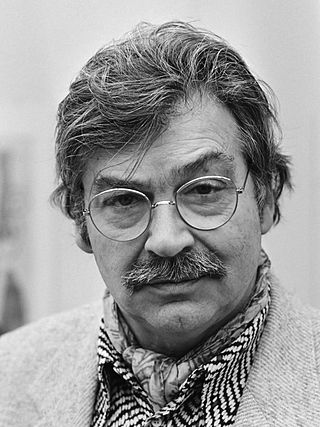
Christiaan Karel Appel was a Dutch painter, sculptor, and poet. He started painting at the age of fourteen and studied at the Rijksakademie in Amsterdam in the 1940s. He was one of the founders of the avant-garde movement CoBrA in 1948. He was also an avid sculptor and has had works featured in MoMA and other museums worldwide.
Jørgen Nash was a Danish artist, writer and central proponent of Situationism.
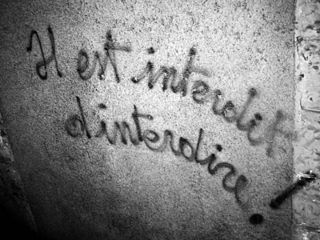
The Situationist Times ran to six issues edited and published by Jacqueline de Jong between May 1962 and December 1967 in Hengelo (Netherlands), Copenhagen and Paris, in editions of between 1,000 and 2,000.
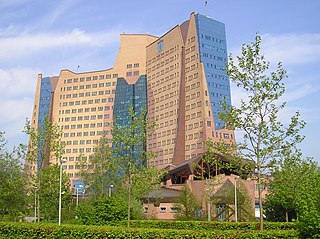
Anton (Ton) Alberts was a Dutch architect best known for the ING Bank (1982) in the Bijlmer district of Amsterdam and the Gas Corporation headquarters in Groningen.

Constant Anton Nieuwenhuys, better known as Constant, was a Dutch painter, sculptor, graphic artist, author and musician.
Jakob van Domselaer was a Dutch composer.

The Second Situationist International were a small group of situationists who broke away from the Situationist International (SI). Jørgen Nash identifies the first manifestation of the group as a leaflet signed by himself along with Jacqueline de Jong and Ansgar Elde, shortly after the group Seven Rebels was formed at Situationist Bauhau at Asger Jorn's farm Drakabygget in southern Sweden.
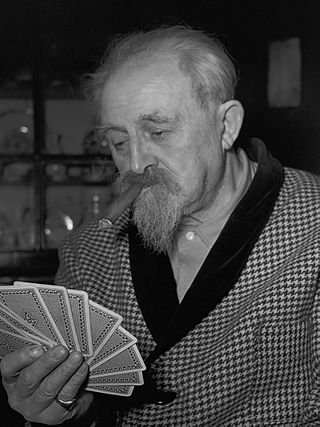
Johannes Carolus Bernardus (Jan) Sluijters, or Sluyters was a Dutch painter and co-founder of the Moderne Kunstkring.

The Cobra Museum of Modern Art is an art museum in Amstelveen in the Netherlands. The collection of the museum consists of key works by artists associated with three art movements, Vrij Beelden (1945), Cobra (1948–1951), and Creatie (1950–1955). In addition, the museum organizes temporary exhibitions by national and international avant-garde artists.

The Amsterdamse Joffers were a group of women artists who met weekly in Amsterdam at the end of the 19th and beginning of the 20th century. They supported each other in their professional careers. Most of them were students of the Rijksakademie van beeldende kunsten and belonged to the movement of the Amsterdam Impressionists. Each one became a successful artist. As a group they contributed to the social acceptance in the Netherlands of women becoming professional artists.

Beatrix Ruf is a German art curator and art advisor who held the position of director of the Stedelijk Museum Amsterdam between November 2014 and October 2017. Formerly she was director of the Kunsthalle Zurich. She is associate editor for JRP-Ringier, works with the LUMA Foundation, the Garage Museum of Contemporary Art in Moscow, and is the artistic director of the Ringier Collection. In 2012, she was listed in the top ten of the most influential people in the art world by ArtReview.
Ans Wortel was a Dutch painter, poet and writer. She made gouaches and oil paintings, aquarelles, drawings, collages, lithographs, etchings, sculptures and glass sculptures. She was an autodidact and won the first prize at the biennale of Paris in 1963. She was one of the leading female artists of postwar Dutch modern art. There are some 50 books with contributions from or about Wortel.
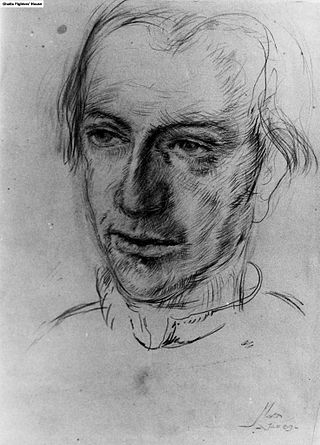
Max van Dam was a Dutch artist born in Winterswijk. He was murdered in the Sobibor extermination camp.

Nan Hoover was a Dutch/American-expatriate artist who is known for her pioneering work in video art, photography and performance art. She spent almost four decades living and working in the Netherlands. She also used the mediums of drawing, painting, photography and film and created art objects and sculptures. One of the main themes of her art was light and motion. The rigorous, minimalist handling of her means as well as the intense concentration with which she performed within spaces of light and shadow are the most salient characteristics of her artistic work.
Barbara Visser is a Dutch artist, who works as conceptual artist, photographer, video artist, and performance artist.

Martine Theodora Bax is a Dutch-Canadian art historian and art critic in modern art. Her specializations are the work of Piet Mondrian and the relationship between art and Western Esotericism, especially Modern Theosophy and Anthroposophy.

Marie Heijermans or Marie de Roode-Heijermans (1859-1937) was a Dutch painter.